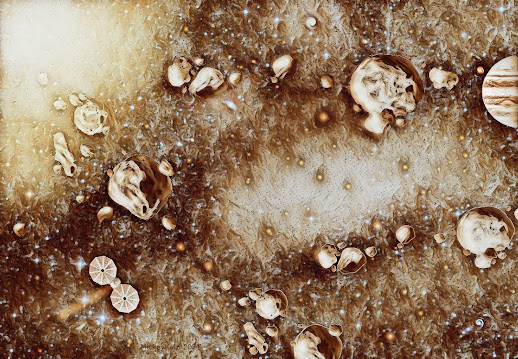 |
| Credit: NASA |
We see meteors (also called shooting stars) in the sky whenever Earth travels through an area of space littered with debris from a past comet.
Orionid meteors appear every year in mid-October when Earth plows through the dusty trail left over from Halley's comet.
QUESTION: Shouldn't they be called "Halley meteors" instead?
ANSWER: Good idea, but no. Meteor showers are named after their "radiant." This is the part of the sky from which the meteors appear to radiate or spread out from.
The Orionid meteors appear to radiate from the constellation Orion.
QUESTION: Shouldn't they be called "Orion meteors" instead of "Orionid meteors"?
ANSWER: Probably, but scientists like to use fancy Latin words.
Comet Halley takes about 76 years to orbit the sun. Each time it crosses Earth's orbit, it leaves more dust and rocks behind for us to run into year after year.
Fun fact: I saw Halley's comet the last time it came around in 1986. I only had a small telescope, so it did not look very impressive, sad to say.
But don't worry. Comet Halley will swing through the inner solar system again in 2061, a measly 40 years from now. Maybe you will see it for yourself.
Back to the meteors! NASA has these viewing tips...
"The Orionids are viewable in both the Northern and Southern hemispheres during the hours after midnight. Find an area well away from city or street lights. Come prepared with a sleeping bag, blanket or lawn chair.
Lie flat on your back with your feet facing southeast if you are in the Northern Hemisphere or northeast if you are in the Southern Hemisphere, and look up, taking in as much of the sky as possible. In less than 30 minutes in the dark, your eyes will adapt and you will begin to see meteors.
Be patient -- the show will last until dawn, so you have plenty of time to catch a glimpse."
More info:
https://solarsystem.nasa.gov/asteroids-comets-and-meteors/meteors-and-meteorites/orionids/in-depth/




























